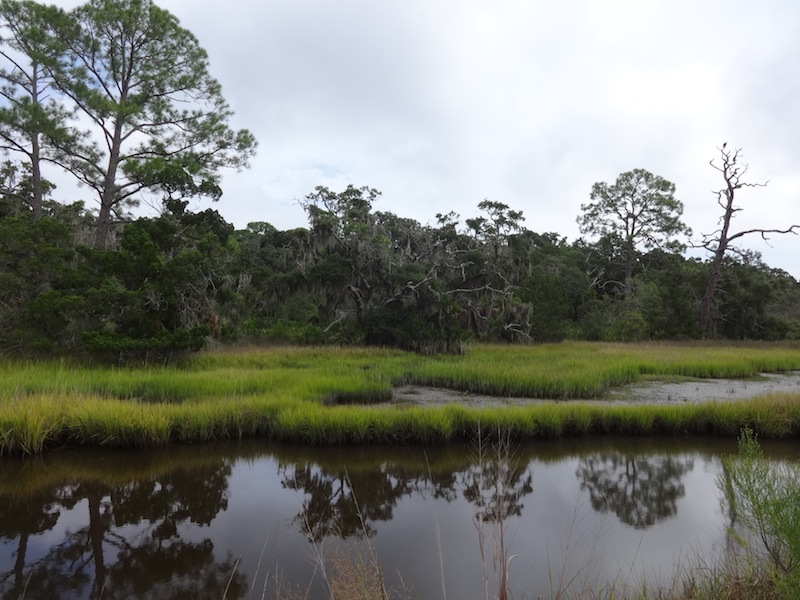Our stay on Jekyll Island was all about relaxation but we also wanted to find out more about area, so we hired a couple of bikes and went on a ride.
The bikes took a little getting used to, especially the surprising lack of brakes. I only discovered how to stop when I lurched suddenly, having momentarily pedalled backwards. That was the braking mechanism, one that had been invented by a halfwit.
With the island as flat as a pancake, I hoped we wouldn’t need to use the brakes too often…
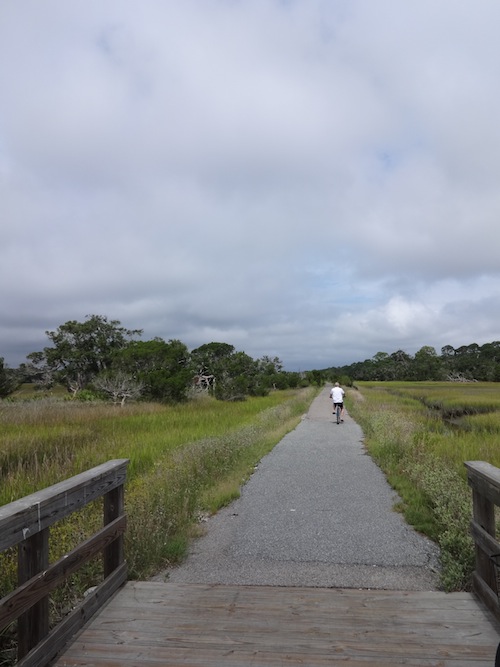
The cycle path around the northern end of Jekyll took us to the sandy beach on the eastern side, which loomed drab and windswept under cloudy skies, past our hotel’s pavilion and an unattractive collection of shops in what looked like old shipping containers. Just beyond was a cheapo hotel in the process of being renovated. It wasn’t exactly pretty.
However, it did get better. Trees stood at the back of the dunes, their branches bent double by the prevailing Atlantic winds.
We passed a number of homes belonging to some of the 370 or so permanent residents of the island, and continued on to the northern tip of Jekyll.
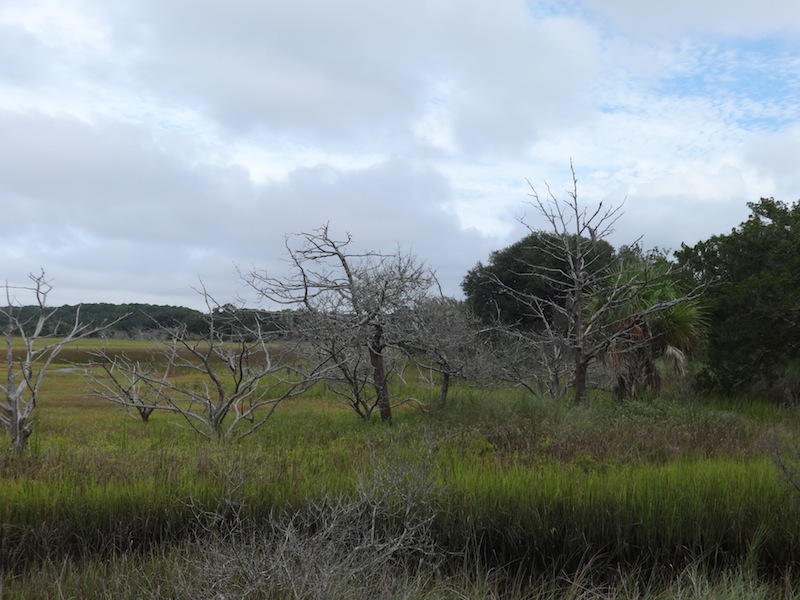
We turned off the main road and found ourselves in spectacular marshland, ringed by woods. Clam Creek was a land of reeds, rivers and dead trees that looked like sculptures planted deliberately in the swamp.
The marsh was full of life. We spotted a family of black and white raccoons scurrying through the reeds, swarms of tiny crabs scuttling across the mud, shoals of small fish darting this way and that in the shallow water. The muddy banks were full of oysters and clams and, with the tide out, we could hear them popping repeatedly. Graham spotted a deer, but there was no sign of the creek’s alligators.
The area stank of rotting vegetation but it was an extraordinary landscape, one I’d never seen before.
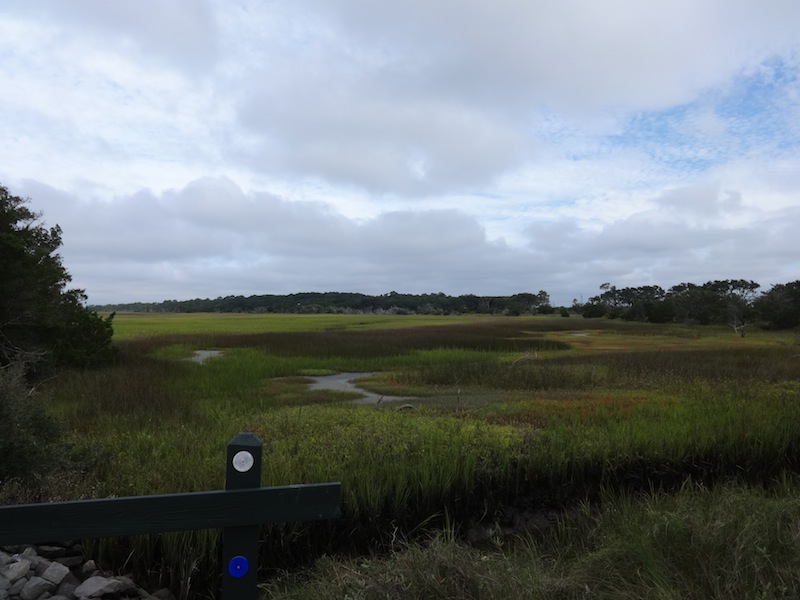
We cycled on to Driftwood Beach, so named because the sand at low tide exposes dead trees locked in the sand, victims of the corrosive force of the rivers that are slowly stripping away this part of Jekyll. A few pensioners were camped out, soaking up the sunshine that was beginning to peek through the clouds, but the tide wasn’t out far enough to see too many of the dead trunks and branches.
After an ice cream at a nearby cafe, we cycled on through the trees, dodging giant cobwebs and the large and ugly spiders that called them home. We came across Horton House, a shell of a building now but once the home of the British officer charged with guarding the island and the sea lanes that approached Jekyll and its neighbours.
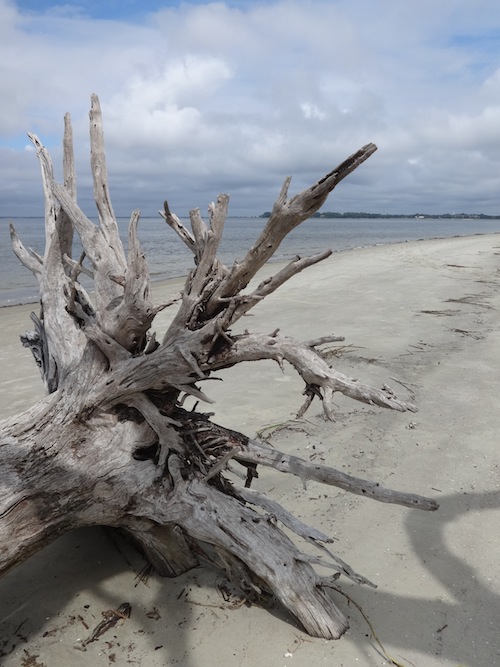
Several European armies fought over the territory before independence came but in the 19th century the island was owned by a French family who’d fled the revolution in Paris. Their descendants later sold it to the syndicate that built the clubhouse and made Jekyll so exclusive.
We continued on, past some of the posher of the island’s homes and the little airfield, before arriving back at the hotel.
Lunch was taken by the pool before we grabbed some sunbeds and relaxed.
In the evening we went to the little jetty by the hotel for dinner at Latitude 31. My shrimp cocktail and scallops arrived in huge quantitites and would’ve cost a fortune back in the UK. We watched as the sun set in the west and briefly gave us a brilliant display of deep oranges amid the breaking clouds.
Lightning flashed periodically across the night sky, far away, but the rain never came. Meanwhile, we finished our day with beers in the hotel pub.

